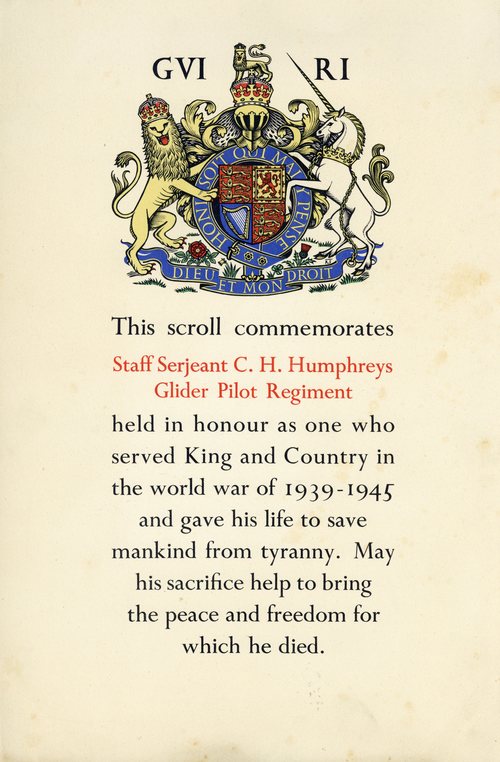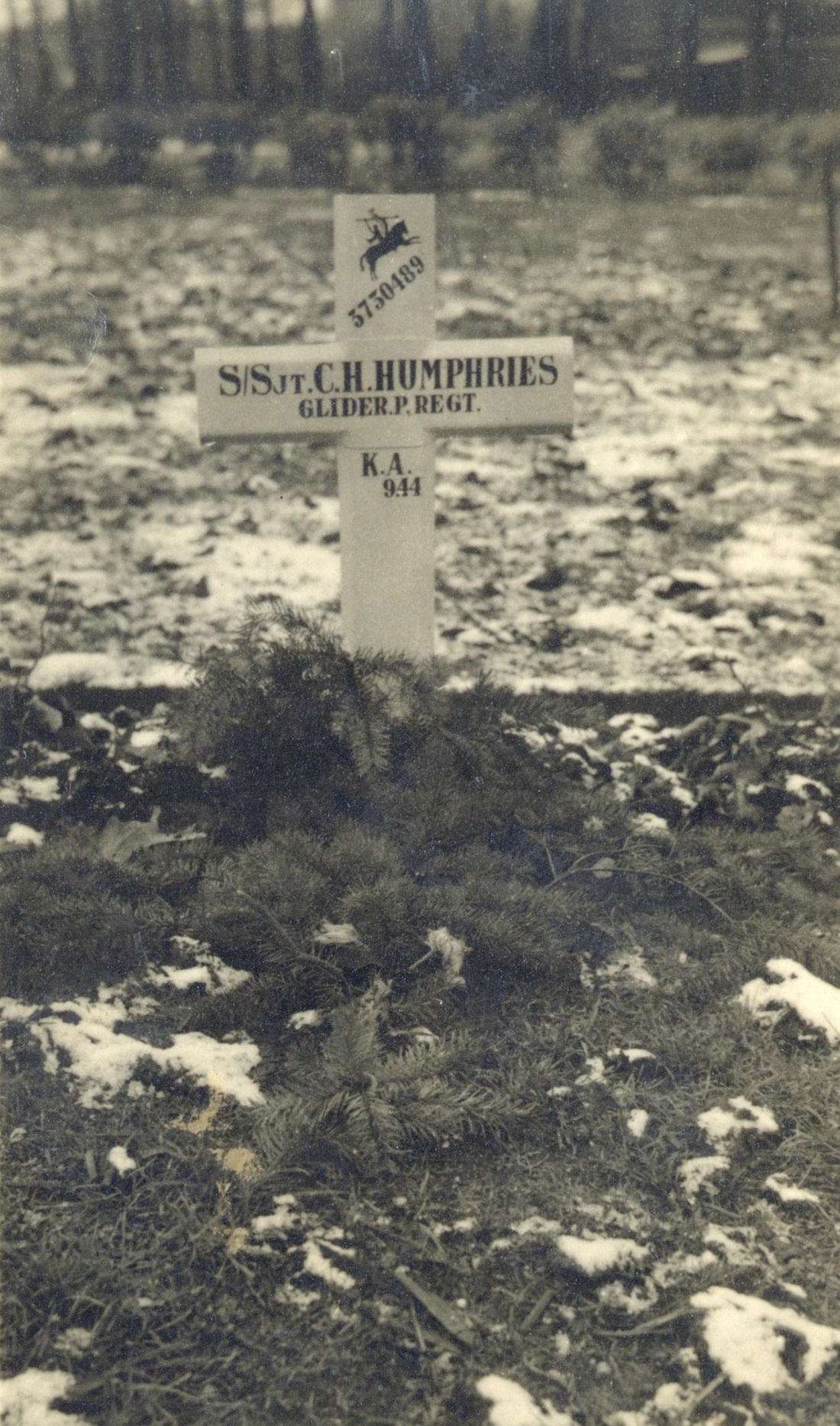Auction: 17001 - Orders, Decorations and Medals
Lot: 229
'There was one danger area at the southern end of LZ-X. A German force had infiltrated between two of the Border companies and was able to fire on the gliders landing there. The Borders tried to suppress this opposition with mortar fire; Major Cousens, the temporary commanding officer of the Borders, later said: "As each glider came in, the Germans were mortared, but, in order to avoid hitting gliders in mid-air, the timing of the mortar bomb had to be exact to a fraction of a second, a successful and amusing game. One containing artillerymen of the Light Regiment, had two men killed and an officer seriously wounded. A R.E.M.E. glider was hit, with two glider pilots and a R.E.M.E. jeep driver killed and an officer, Lieutenant Harry Roberts, badly wounded and then pinned down on the landing zone for several hours exchanging fire with the Germans until recovered by British stretcher-bearers in the evening … '
One of the killed glider pilots was Staff Sergeant C. H. Humphreys; Arnhem 1944 - The Airborne Battle, 17-26 September, by Martin Middlebrook, refers.
A poignant Second World War North-West Europe campaign service group of four awarded to Staff Sergeant C. H. Humphreys, Glider Pilot Regiment (Army Air Corps), who, having participated in Operation "Mallard" over Normandy in June 1944, was killed in action at Arnhem in September 1944: on that occasion he piloted a glider carrying a team of R.E.M.E. under Lieutenant 'Harry' Roberts, later the author of Capture at Arnhem - the glider was hit and downed by enemy ground fire over DZ-X
1939-45 Star; France and Germany Star; Defence and War Medals 1939-45, extremely fine (4)
Charles Henry Humphreys commenced his pilot training in July 1942 and transferred to No. 3 Glider Training School at Stoke Orchard towards the end of the year.
Having then gained sufficient experience in Hotspurs and Horsas, he was posted to 1st Battalion, Glider Pilot Regiment, in which capacity he participated in Operation "Turkey Buzzard" in June 1943: deemed by many members of the regiment as next to suicidal, the operation entailed Horsas being towed to Sousse in North Africa from Portreath, in readiness for the Sicily landings.
That hair-raising journey safely accomplished, Humphreys was posted to E Squadron, Glider Pilot Regiment, 2 Wing, another component of the Army Air Corps. It was in this capacity that he participated in Operation "Mallard" on the evening of D-Day 6 June 1944, one of the most successful airborne operations of the war: 246 gliders arrived at their chosen Landing Zone (LZ) in support of the 6th Airborne Division, in Humphreys case in a Horsa laden with reinforcements, likely north of Ranville.
And so to events in September 1944, when he was killed in action at Arnhem, a story in part related above, his glider being hit by enemy ground fire over LZ-X, while bringing in a team of R.E.M.E. Some confusion reigns as to his exact date of death - whether the 17th or 18th: if the latter he must have died of wounds. Either way, his remains were found buried in a field near Klein Amerikaweg, together with those of Cyril Gell, D Squadron, Glider Pilot Regiment, Thomas G. Morgan, 1st Air Landing Light Regiment, R.A., and an unknown soldier.
Sold with a quantity of original documentation, comprising:
(i)
The recipient's R.A.F. Pilot's Flying Log Book, covering the period July 1942 to August 1944, the month before his death in action at Arnhem, together with original forwarding letter from the A.A.C. Record Office in Edinburgh, addressed to his mother and dated 9 July 1946.
(ii)
A.A.C. Record Office letter to the recipient's mother, confirming his death in action 'on or shortly after 18 September 1944', this dated 30 July 1945.
(iii)
Buckingham Palace memorial scroll in the name of 'Staff Serjeant C. H. Humphreys, Glider Pilot Regiment', in its original forwarding envelope addressed to his mother, 'Mrs. F. M. Humphreys, 10A Broadway Parade, Crouch End, Hornsey, London N.8'.
(iv)
A War Graves Commission 'Form for Verification of Name and Particulars', with a photograph of his temporary wooden cross at Arnhem British Cemetery, Holland.
Additional reference sources:
Arnhem 1944 - The Airborne Battle, 17-26 September, by Martin Middlebrook (Pen & Sword, 2014).
The Eagle, August 1990.
Subject to 20% VAT on Buyer’s Premium. For more information please view Terms and Conditions for Buyers.
Sold for
£1,800







